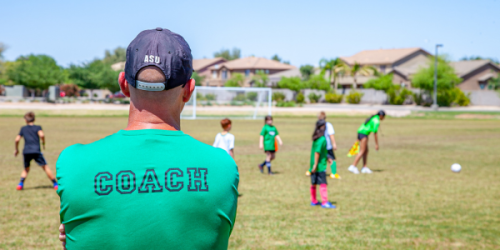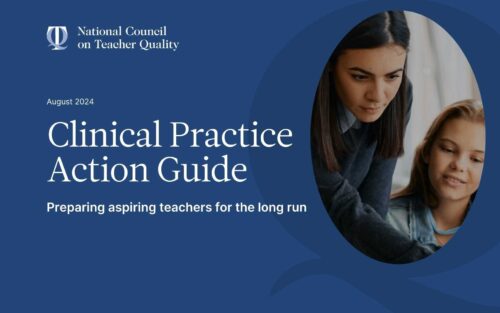I can be a slow learner.
My colleagues at NCTQ and I have been working together on teacher quality for well over a decade. For a long time, we sorted issues into neat little buckets, which allowed us to organize complicated problems into some manageable order: 1. Teacher preparation programs. 2. State policies. 3. School district policies and practices.
Those buckets are what made us overlook an opportunity, right under our nose, to rapidly and systematically improve teacher quality through student teaching partnerships formed when preparation programs work with school districts to place teacher candidates in schools in order to get real classroom experience.
NCTQ studied and ranked student teaching programs over the last five years in order to better understand why so many student teachers don’t have good experiences. Given the problems we and others have chronicled, it certainly didn’t seem likely that student teaching could serve as a promising vehicle for solving the nation’s teacher quality challenges.
The aha moment was a realization that the student teaching experience is the point at which the interests of two institutions we had perceived to be in separate silos actually do intersect. Where interests intersect, so do the possibilities. After that critical point, their interaction and interests diverge: any attempts to alter outcomes for teacher candidates simply will be too late.
So back it up a bit—just as we did. What if both institutions approached student teaching differently and ended up the better for it?
To begin, school districts would stop indiscriminately accepting as many student teachers, regardless of subject area, and instead adjust the numbers to line up with what is indicated by their general hiring trends. For example, if the district doesn’t typically hire more than 25 elementary teachers each year, it would no longer accept a couple hundred of elementary student teachers.
Conversely, programs in high production states would also look increasingly out of state to place student teachers—particularly in rural areas, which have such a hard time finding teachers. Rural districts would embrace such partnerships, since they know that they’re much more likely to be able to convince a student teacher, hopefully fresh off a positive experience and having overcome the hurdle of moving to an unfamiliar place, to come teach in their district.
Such shifts would produce a much closer alignment of teacher supply with teacher demand and insert some rationale for the ongoing overproduction of elementary teachers.
Beyond subject areas, school districts would also make sure that student teachers have necessary knowledge and skills. Where there is a mismatch, programs would have to look elsewhere to place candidates or adjust their preparation programs to better meet the needs of the district.
This shift would lead to a better alignment between the demands of preparation and of the classroom, as school districts and teacher prep programs would have to agree on the core knowledge and skills every student teacher should have acquired.
School districts would take much more seriously the quality of the classroom teacher who is assigned to mentor student teachers. Instead of basing these assignments on recruiting any willing teacher—regardless of aptitude—they would only allow great teachers to mentor student teachers. While it’s true that many great teachers currently turn down the chance to mentor a student teacher for fear of having to essentially babysit a weak student teacher, our bet is that they would line up for the privilege given the assurance that the student teacher was capable and dedicated to the profession.
This shift would ensure a uniformly strong student teaching experience to all student teachers and would result in a more seamless pipeline of teacher talent into the district. Keep in mind that a student teacher who has had a fabulous experience is much more likely to accept a job offer than one who has not. Districts need to treat their best teachers as their top recruiters.
With these shifts in mind, NCTQ has launched a new initiative to make student teaching partnerships work a whole lot better than they currently do for all parties: teacher candidates who want strong student teaching experiences, teacher prep programs who want to make sure that student teaching is a top-notch culminating experience, and school districts who want to recruit and hire the best teacher candidates. We’re calling it Pipeline, because that is the role that student teaching should play as the connector from preparation programs into districts. In this pilot year, we’re working with a select group of districts before offering it to a national audience.
In any case, now I get it. When thinking about teacher quality, it’s not about what teacher prep programs need to do “over here” and what school districts should be doing “over there.” It’s about making sure that, since their interests are shared, they work together, and, yes, maybe turn a little straw into gold for the benefit of a new generation of teachers and their students.
More like this

The data and analyses district leaders used to support their work in 2024

Ahead of the pack: Which districts are setting strong clinical practice policies?


